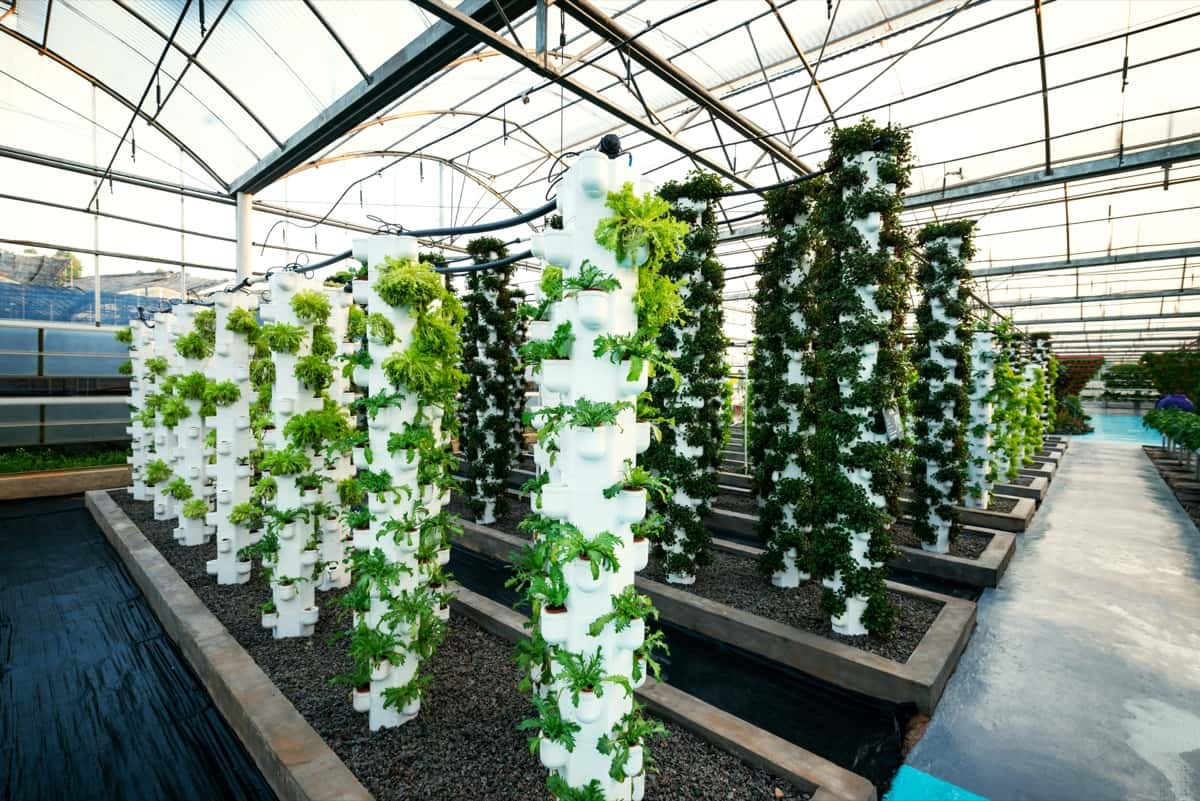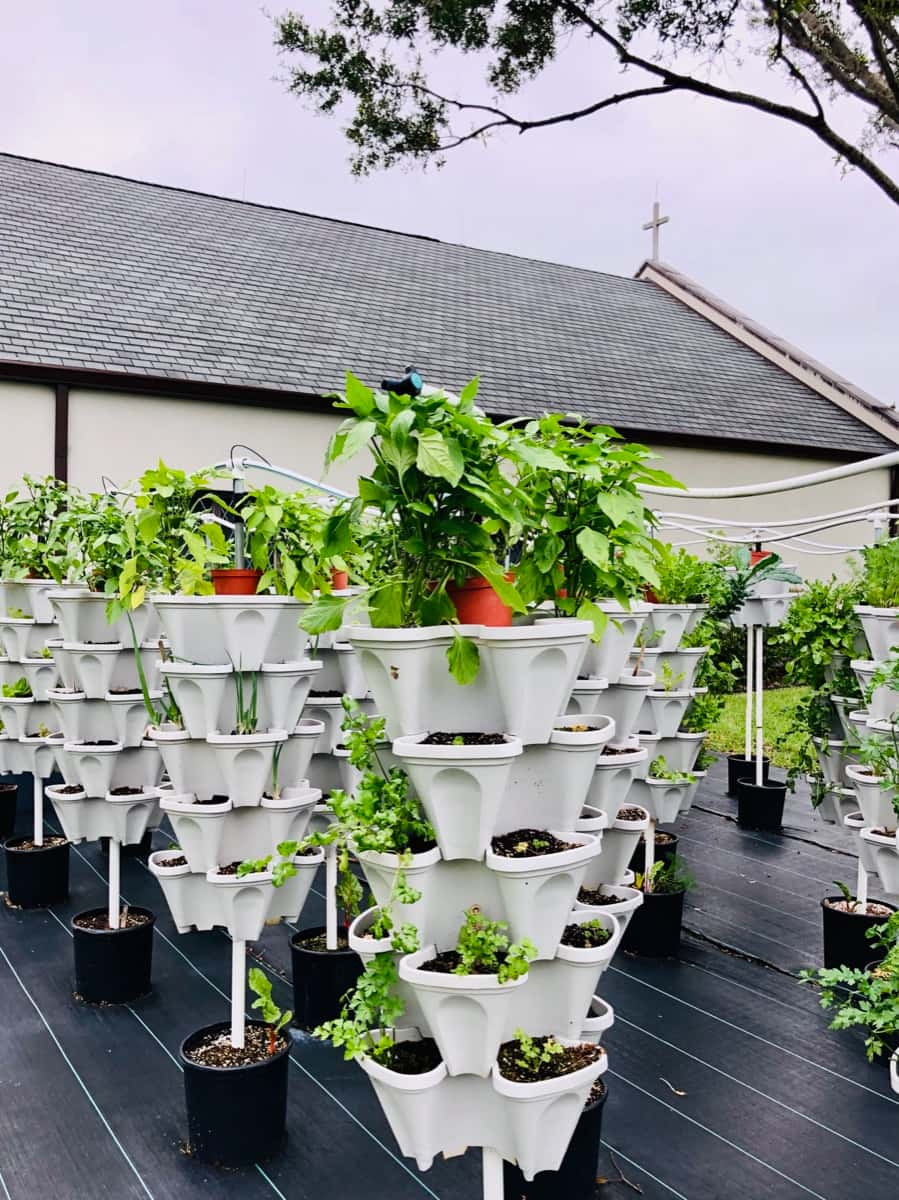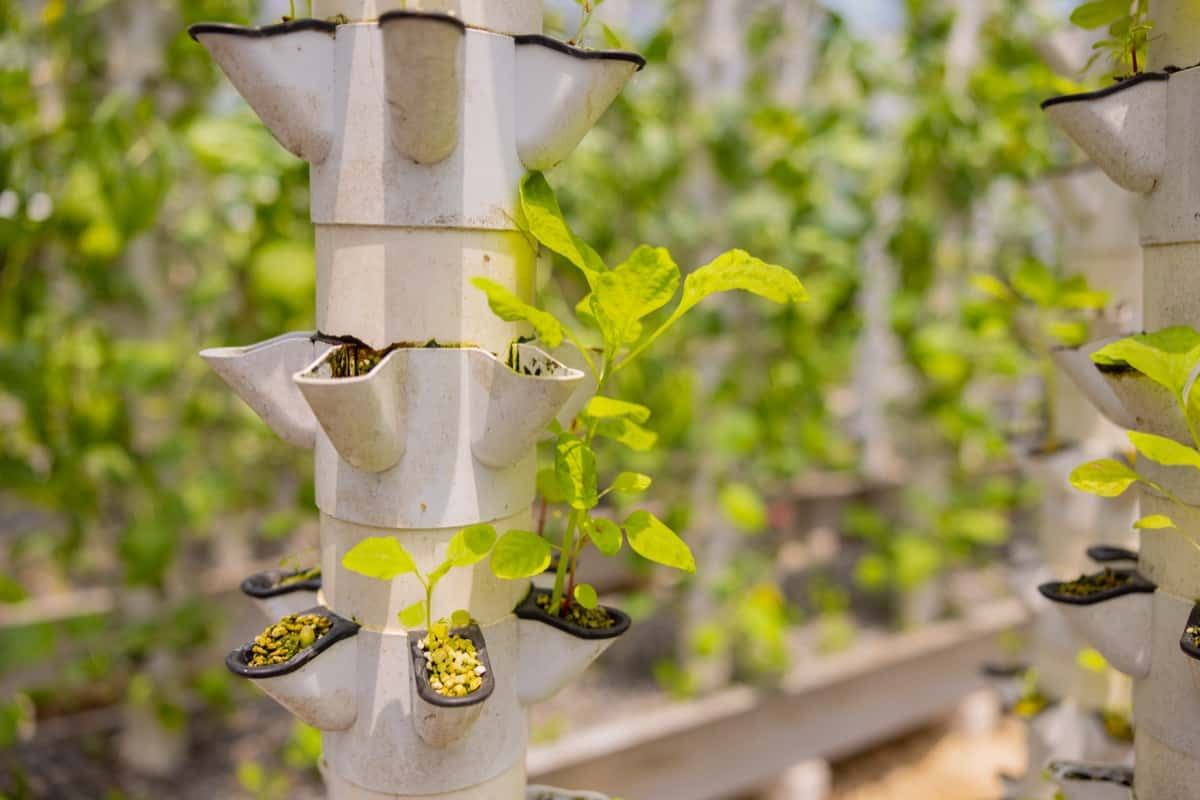Vertical farming with Tower Farms is revolutionizing agriculture in Italy, offering a sustainable and efficient way to produce food. By utilizing vertical space, these innovative systems can maximize crop yields while minimizing resource usage. Vertical farming methods in Italy offer numerous benefits for Italian agriculture – increased crop yields, reduced resource consumption, and improved food quality – all within a compact footprint.

Vertical Farming with Tower Farms in Italy
Exploring New Vertical Farming Methods with Tower Farms in Italy
Vertical farming has emerged as an advanced solution to address the challenges of traditional agriculture. In Italy, this trend is gaining popularity with the introduction of Tower Farms – a revolutionary method that allows crops to be grown vertically in urban areas. Instead of sprawling fields, these systems stack plants on top of each other in towers, maximizing limited land resources. Italy’s embrace of Tower Farms is driven by its commitment to sustainable practices and its desire to reduce reliance on imports.
With its diverse climate and fertile soil, Italy has long been known for its agricultural prowess. However, changing weather patterns and increasing urbanization have posed significant challenges to traditional farming methods. By exploring new vertical farming techniques like Tower Farms, Italy is adapting to these changes while simultaneously improving food security and reducing environmental impact. These farms can be set up anywhere – from abandoned warehouses in bustling cities to rooftops overlooking picturesque landscapes.
How Tower Farms are Transforming Urban Farming in Italy
Tower farms utilize hydroponic technology to cultivate crops in vertically stacked layers within enclosed environments. By maximizing space and resources, tower farms can produce a high yield of fresh fruits, vegetables, and herbs all year round. One of the key advantages of tower farms is their ability to be set up virtually anywhere – from rooftop gardens to abandoned warehouses. Moreover, tower farms provide optimal growing conditions by controlling factors like temperature, humidity, light intensity, and nutrient delivery.
This precision ensures that plants receive exactly what they need for healthy growth without relying on pesticides or herbicides. In addition to addressing environmental concerns, these vertical farming systems also contribute significantly towards improving food security in densely populated cities like Rome and Milan. With limited arable land available within city limits, tower farms offer a sustainable solution by producing fresh produce locally throughout the year.
Italy’s Shift to Sustainable Farming with Tower Farm Technology
Italy, known for its rich agricultural heritage and exquisite cuisine, is now embracing a new era of sustainable farming through the implementation of tower farm technology. This innovative approach to urban agriculture has revolutionized the way crops are grown in densely populated areas. Tower farms offer a vertical solution to limited space by utilizing stacked levels of growing trays. These vertical structures maximize land use efficiency and allow farmers to cultivate crops all year round, regardless of external environmental factors.
In case you missed it: Growing Carolina Reaper Chili Peppers on a Tower Garden Vertically

By adopting tower farm technology, Italy is not only addressing the challenges posed by urbanization but also reducing its reliance on traditional farming methods that often require vast amounts of water and pesticides. The shift towards sustainable farming practices aligns perfectly with Italy’s commitment to preserving its natural resources and promoting eco-friendly initiatives. Furthermore, tower farm technology enables farmers to have greater control over their crop production.
By closely monitoring variables such as temperature, lighting, and nutrient levels within each tower unit, they can optimize plant growth while minimizing waste. This shift towards Sustainable tower farming technology in Italy has already yielded promising results in terms of both economic viability and environmental impact. Tower farms have been shown to produce higher yields compared to traditional agriculture while significantly reducing water consumption. This translates into increased profitability for farmers and reduced strain on local water sources.
The Success Story of Tower Farms in Italian Urban Agriculture
The success story of Tower Farms in Italian urban agriculture is a testament to the power of innovation and sustainability. These Successful urban tower farms in Italy have revolutionized the way food is grown in urban areas, providing fresh produce year-round, regardless of climate or location. One of the key factors contributing to their success is their efficient use of space. In densely populated cities like Milan and Rome, where land for traditional farming is scarce, Tower Farms offers a viable solution.
By stacking plants vertically in hydroponic towers, these farms can grow large quantities of crops in a fraction of the space required by conventional farms. Another factor that has contributed to their success is the ability to control every aspect of the growing process. With advanced technology and precise monitoring systems, conditions such as temperature, humidity, and nutrient levels optimize plant growth.
This level of control not only ensures consistent quality but also minimizes water usage and eliminates the need for harmful pesticides or herbicides. Furthermore, Tower Farms provides a sustainable alternative to traditional farming methods that often rely heavily on fossil fuels for transportation and require vast amounts of water resources. By locating these vertical farms within or near urban centers, they significantly reduce food miles while promoting local production and reducing carbon emissions.
Improving Food Security in Italy with Vertical Tower Farms
One such solution gaining traction is food security in Italy’s tower farms. This revolutionary method of agriculture allows crops to be grown year-round, regardless of weather conditions. Vertical tower farms utilize vertical space efficiently by stacking plants on multiple layers on top of each other, maximizing land use. By growing crops indoors using controlled environments, tower farms eliminate the reliance on traditional soil-based farming methods that are vulnerable to pests, diseases, and climate change.
In case you missed it: How to Build a Vertical Garden With PVC Pipes: Cheap, DIY Making Ideas, Tips, and Techniques

Instead, hydroponic systems provide nutrients directly to plant roots through water solutions. Tower farms also employ advanced technology, such as LED lighting systems that simulate natural sunlight for optimal growth. This means that farmers have greater control over crop quality and yield throughout the year.
Case Studies: The Impact of Tower Farms in Italian Vertical Farming
One of the most exciting aspects of Italian vertical farming case studies is the opportunity to study and analyze its impact on traditional agriculture. Several case studies have revealed fascinating insights into how this innovative farming method is revolutionizing food production. In a recent study conducted by an agricultural research institute, it was found that Tower Farms significantly increased crop yields compared to conventional farming methods.
The controlled environment inside the towers allows for optimal conditions for plant growth and healthier crops. Another case study focused on water usage in Tower Farms. It was discovered that these vertical farms use less water than traditional agriculture methods. This reduction in water consumption not only helps conserve this precious resource but also reduces the strain on local water supplies.
Furthermore, a case study examined the economic viability of implementing Tower Farms on a larger scale. It concluded that despite initial investment costs, these farms can generate substantial profits due to their high yield potential and year-round production capabilities.
Adapting Traditional Italian Crops to New Vertical Farming Techniques
Italy is renowned for its rich agricultural heritage, with traditional crops vertically farming Italy like tomatoes, basil, and grapes and playing a pivotal role in the country’s cuisine. However, as urbanization continues to sweep across Italy’s landscape, the need for innovative farming methods has become increasingly apparent. Enter vertical farming and tower farms – an exciting new approach that allows farmers to grow crops vertically in stacked layers.
This revolutionary technique presents a unique opportunity to adapt traditional Italian crops to meet the demands of modern agriculture. With vertical farming, farmers can optimize space utilization by growing crops upwards instead of outwards. By utilizing hydroponic systems that provide essential nutrients directly to plant roots without soil, these farms offer a controlled environment where temperature and lighting conditions can be tailored precisely.
This precision allows farmers to create ideal growing conditions for specific crop varieties regardless of seasonal limitations. For instance, using vertical farming techniques enables growers to cultivate vine-ripened tomatoes year-round rather than relying on external factors. Moreover, vertical farming offers advantages beyond increased yield and extended growing seasons.
Technological Advancements in Italy’s Tower Farming Industry
Italy has been at the forefront of technological advancements in vertical farming, particularly with the use of tower farms. These innovative systems have revolutionized the way crops are grown and cultivated, maximizing space and resources while minimizing environmental impact. One significant technological advancement in Italy is the integration of smart sensors and automation technology into tower farms.
These sensors monitor crucial factors such as temperature, humidity, and nutrient levels in real time, ensuring optimal growing conditions for plants. Automation systems control irrigation cycles and adjust lighting schedules based on plant needs, reducing human intervention while maintaining crop quality.
Another breakthrough is the implementation of precision farming techniques within tower farms. Through data analysis and advanced algorithms, farmers can precisely tailor irrigation amounts and nutrient solutions to each plant’s requirements. This not only maximizes yields but also minimizes water usage and fertilizer waste—a vital step towards sustainable agriculture.
In case you missed it: How to Start Indoor Vertical Garden with Stunning Spider Plants

Evaluating the Environmental and Economic Benefits of Tower Farms in Italy
Tower farms have gained significant attention in the field of urban agriculture, not only for their ability to grow crops vertically but also for the environmental and economic benefits they bring. One of the key Environmental benefits of Italian tower farms is their efficient use of space. By stacking plants on top of each other, tower farms maximize land utilization, making them ideal for urban areas with limited available land.
In terms of environmental impact, tower farms offer several advantages. They significantly reduce water usage compared to traditional farming methods. The closed-loop hydroponic system used in tower farms recirculates water and nutrients efficiently, minimizing waste and conserving resources. Additionally, since tower farms are typically located within or near cities, transportation distances are reduced drastically, which reduces carbon emissions associated with food transport.
Educational Programs and Workshops on Vertical Farming and Tower Farms in Italy
The growing popularity of Vertical farming education opportunities in Italy has led to the development of educational programs and workshops that aim to educate individuals about this innovative form of agriculture. These programs provide valuable knowledge and practical skills to aspiring farmers, entrepreneurs, and even students interested in sustainable farming practices.
Through these educational initiatives, participants can learn about various aspects of vertical farming, including crop selection, cultivation techniques, hydroponics systems, pest management strategies, and more. Workshops often include hands-on activities where attendees can get their hands dirty while learning how to grow crops vertically.
One notable program is the “Vertical Farming Academy,” which offers comprehensive courses on all aspects of vertical farming. Participants gain a deep understanding of the technology behind tower farms as well as practical insights into running successful vertical farms. The academy also provides networking opportunities with industry experts and fellow enthusiasts.
Conclusion
Tower Farms is transforming urban farming in Italy on multiple fronts – from improving food security to promoting sustainability. As this technology continues to evolve, there is no doubt that it will play a vital role in shaping the future of agriculture, not just in Italy but across the globe.
- How to Grow Tomatoes Organically at Home: A Comprehensive Guide
- Organic Gardening on a Budget: Low-Cost Methods and Materials
- Gongura Seed Germination and Planting Methods
- Cabbage Seed Germination and Selection
- Broccoli Seed Germination and Selection
- Asparagus Seed Germination and Variety Selection
- Seasonal Flower Gardening: Best Practices for Spring, Summer, Fall, and Winter
- How to Grow Hibiscus from Flower
- Plantation Ideas for Home Decoration: A Beginners Guide